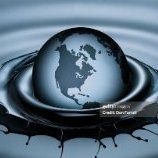Cement top finish - how is it made?
-
Recently Browsing 0 members
- No registered users viewing this page.
-
Topics
-
-
Popular Contributors
-
-
Latest posts...
-
52
Yes, Israel’s plan for Rafah would be a crime but international law has never protected Gaza
What bothers me the most is that you consider yourself normal. Sorry I couldn't resist. Back to your question: What bothers me is the loss of innocent life, the killing of children, Palestinian same as Israeli, who will never have the chance to grow up, fall in love, have a family, watch their kids grow up and cherish all those things that we take for granted. What also bothers me is that so many of us value the lives of one people more than the lives of the other people, accepting them being killed by the tens of thousands feeling no compassion, yet even condemning those speaking out against that onslaught calling them terrorist lovers and tragically not realizing that this is a clear symptom of being brainwashed. It's just devastating. -
80
Getting a Medical Certificate for Cannabis Use in Thailand
There are clinics that do it all online with video consultation and postal delivery of documents. Renewals don't require more than sending a LINE message to a clinic and transferring payment. Document will show up in the post 2-3 days later. -
80
Getting a Medical Certificate for Cannabis Use in Thailand
What makes more sense to me is to get the one-year card that you can show at any time, but then only refill the prescription every couple of months (instead of monthly) to save both money and hassle. If anyone ever questions it, you can simply say you do not get a prescription monthly because you still have supply left from before the law changed. -
72
What Would Make You Leave Thailand, Permanently?
You would have to move to a smaller town, someplace rural, or someplace like Little Rock, or Detroit to find a decent place for $1500 anymore. And the other costs of living are now astronomical. The US is not an option. It represents a very low quality of life, for all who don't own a nice home which is fully paid for. -
72
What Would Make You Leave Thailand, Permanently?
Great. So you already left. I might what? I don't do wives. That's for amateurs. -
41
West Bank Israeli settlers attack Palestinian villagers, three dead
Your racist language, cockroaches, is no different to the Nazis comparing the Jews to rats You should be ashamed debasing yourself to their level.- 1
-

-
-
Popular in The Pub



.thumb.jpeg.d2d19a66404642fd9ff62d6262fd153e.jpeg)








.thumb.jpg.3ee24d9400fb02605ea21bc13b1bf901.jpg)
Recommended Posts
Create an account or sign in to comment
You need to be a member in order to leave a comment
Create an account
Sign up for a new account in our community. It's easy!
Register a new accountSign in
Already have an account? Sign in here.
Sign In Now